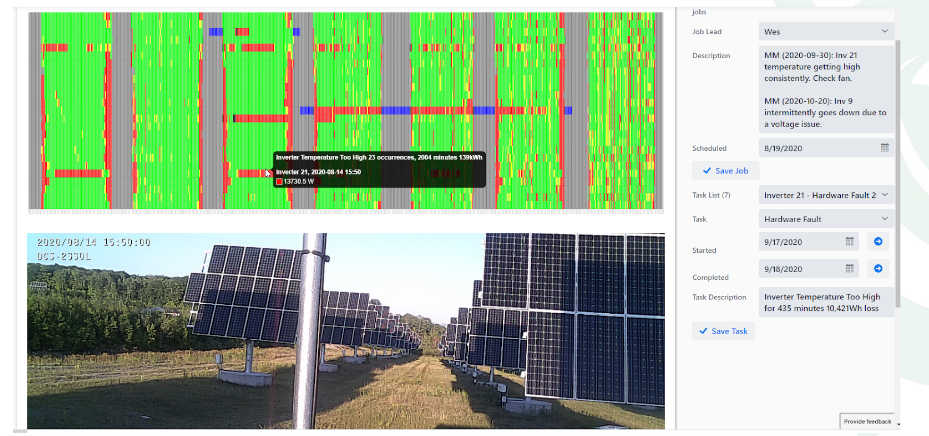Refactoring is a software term. I’ve talked about it before in the context of the workplace. It means to take an existing section of code, or even an entire system, and completely replacing it while making sure it still performs the same function. It is typically done when needs change or outgrow the original functionality.
Frankly, being more of a word person than a code person, I’ve figured out it means one thing.
Disruption.
In a way, disruption is what Boxbrite Technologies does. The company delivers software solutions to help solar energy systems function at their highest efficiency. In doing so, it challenges the motives behind those solar energy installations – there is a lot of incentive to put up solar panels, but very little interest or effort put into making sure they function at their highest efficiency for the span of their entire life (about 20-30 years).
Refactoring solar
The company’s best-in-class solar monitoring and data analytics platform is called Solar Workbench, and right now, it actively monitors more than 300 solar PV systems using the latest tech advances in big data, artificial intelligence, and machine learning.
Boxbrite’s founder and vision leader, Leon Kehl, is not afraid to “refactor” the company or our software. We refactored our workplace during the pandemic. Refactoring is, after all, part of the fabric of the business.
This is exactly the process the Boxbrite team took Workbench through in the past couple of years as they tried to solve the problem of inefficient inverters, or of standard software that works for a homeowner with a small system, but not for someone who owns hundreds of systems.
PV systems have dropped in price by at least 89 percent in the past dozen years, but the other costs to install, monitor or maintain these systems have gone up. An unintentional challenge of significant price drops in solar systems is that, since they are cheaper, the cost of monitoring and maintaining them must also be cheaper.
So, finding efficiencies along the chain has great benefits to the owner. It’s the owner who is left with the maintenance and responsibility for the system’s effectiveness past the warranty date.
Let’s use a solar charger for a phone as an example.
This is basically just a small version of the solar panel PV systems that are deployed to homes and businesses throughout the world. This charger has solar power, plus a battery – power from the grid, demand for the power, AND built-in monitoring, all for $28.
Of course, if you have a problem, you are likely just going to throw this out because it isn’t worthwhile trying to fix it.
When you are purchasing a solar system for your home or for a business, you do your research to find the best technology and installer. However, the reality is that once that system is installed, the risk/costs of that system now pass to you as the owner.
If the technology fails prematurely or there were installation problems, detecting and fixing those problems are now the owner’s problem. The installer and equipment vendor has already made their profit off the sale, and they want to do as little as possible because the extra time and effort will eat into their profits. Even the best installer or equipment vendor has zero incentive to ensure your system is doing what is supposed to. Who is really in your corner at that point?
That’s where we come in.
We don’t make money off selling you a solar system. In fact, we don’t make money by acquiring new customers and systems; we lose money initially. We make money by ensuring that the systems perform as efficiently as possible over the entire lifespan of the project. Our goals completely align with the system owner’s.
In fact, in a bizarre way, we, unlike others, benefit from problems. Why? If systems worked perfectly for their entire lifespan and never developed problems, you wouldn’t need us. However, we know they don’t work perfectly, and system owners need people like us who can help keep their systems running well, as a trusted partner.
Let me give you an example.
One of the services we offer is daily fault monitoring. A situation arose where a customer’s site failed to transmit data to us for one day. It turns out the system was working fine; there was a data transmission problem at their end.
However, our standard is to detect that problem and report it the following day, but in this case, we missed it until the day after that. Our action was to communicate to the customer that there was a problem and that we hadn’t met our declared standard, and also indicate two steps we were taking to prevent kind of problem in the future.
System owners need a trusted partner able to deliver quality monitoring and support at a fair price. We are only able to do this because we’ve established our company, built it from the ground up, to do exactly that.

